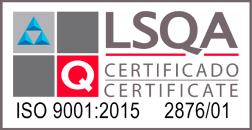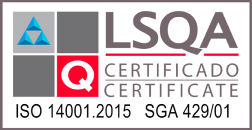Mining, a cornerstone of the Chilean economy, faces extensive challenges today in terms of sustainability and environmental management. These concerns not only encompass the management of particulate matter, arsenic, and sulfur dioxide but also extend to the effects of climate change. This blog will address these topics and the measures implemented to mitigate their impact, with a focus on the environmental obligations and commitments of mining companies to communities and the environmental authority.
Within the mining industry, controlling particulate matter is both a key and critical challenge. This dust, produced during mining and milling operations, can be detrimental to human health and the environment. Various technologies and strategies have been successful in controlling this issue, including the use of water spraying systems and dust suppressors, wind barriers, and coatings for roads and storage areas. Real-time monitoring systems are also being implemented to detect and manage sources of particulate matter emissions.
The presence of arsenic and sulfur dioxide in mining emissions presents another challenge. Chilean smelters have adopted gas capture technologies and cleaning systems to minimize the release of these substances. Gas cleaning methods, like wet and dry scrubbers and electrostatic precipitators, have been particularly effective. But today, there is a significant challenge to increase arsenic abatement efficiencies, especially using best available technologies (BAT), such as the use of CaO or Na2O during Copper Conversion and Refining.
However, these technological solutions are not adequate on their own. This is where Integrated Operations Management (IOM) and artificial intelligence (AI) are beginning to play a pivotal role. IOM enables the integration and analysis of data from various operational and environmental sources, providing mine operators with a more comprehensive and real-time view of their operations. This can aid in detecting potential issues before they arise and optimize operations to reduce environmental impact.
AI, in turn, holds the potential to elevate mining’s environmental management to the next level. Through machine learning algorithms, it’s possible to enhance the prediction and control of emissions, and to streamline mining operations to be more efficient and less harmful to the environment. While the adoption of AI in mining is still in its nascent stages, its potential has already been demonstrated in several applications, such as optimizing water management and predicting air quality.
Beyond these technological advancements, the commitment of mining companies to local communities and environmental authorities remains paramount. Transparency in mining operations, active community involvement in decision-making, and strict adherence to environmental regulations and commitments are essential for forging a sustainable mining industry.
Climate change poses additional significant challenges for Chilean mining. Shifting rainfall patterns can affect water availability, and rising temperatures may increase energy demands for cooling. To tackle these issues, mining companies are embracing climate adaptation strategies, such as using renewable energy, enhancing energy efficiency, and recycling and reusing water.
In conclusion, while Chilean mining faces considerable environmental and sustainability challenges, advancements in technology and management, coupled with commitment to communities and environmental authorities, are paving the way for a more sustainable mining industry. Nonetheless, there remains much to accomplish, and the journey towards sustainability will demand ongoing, dedicated effort from all stakeholders involved.











